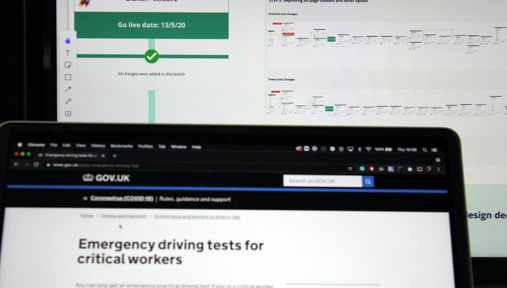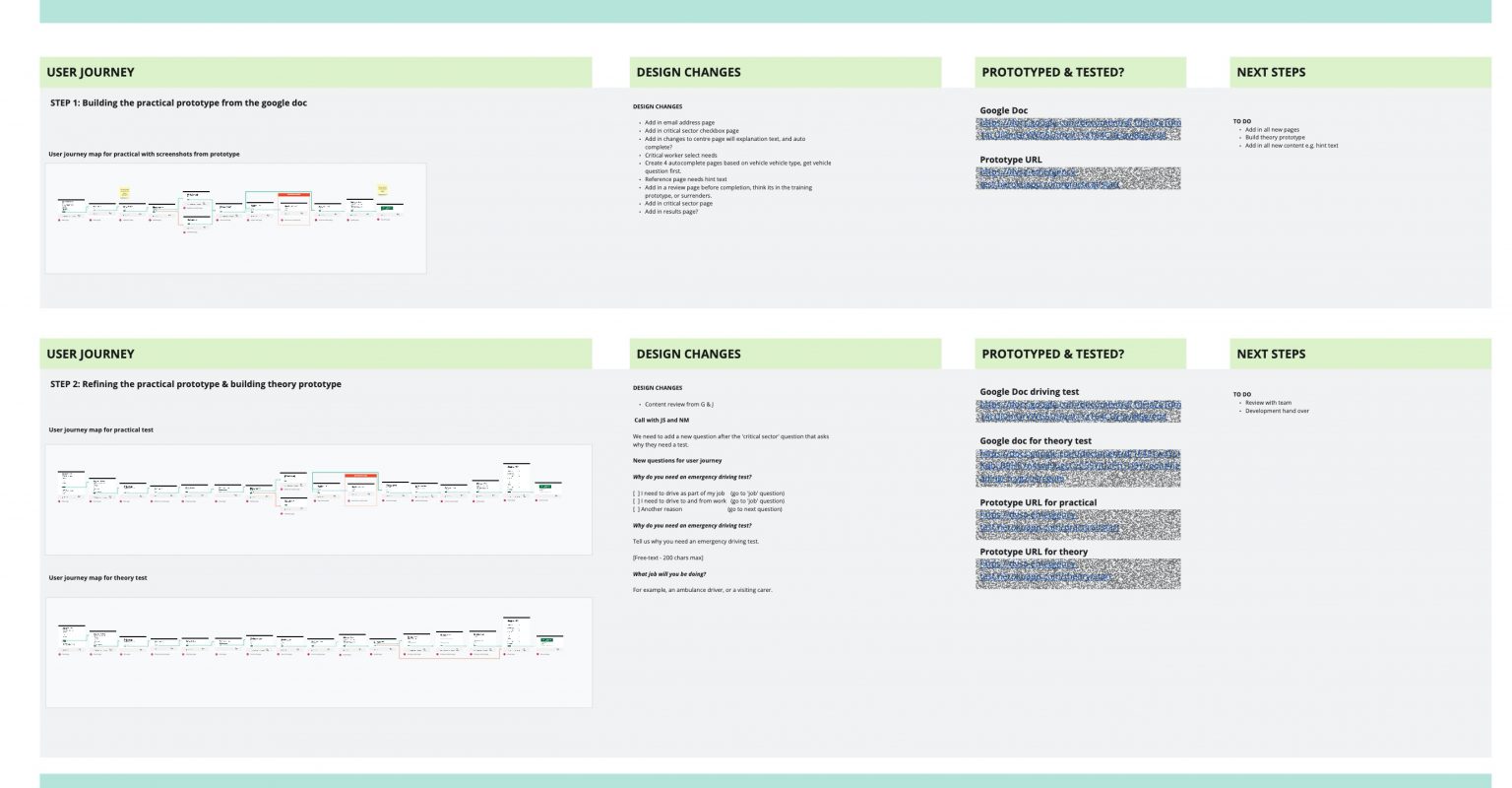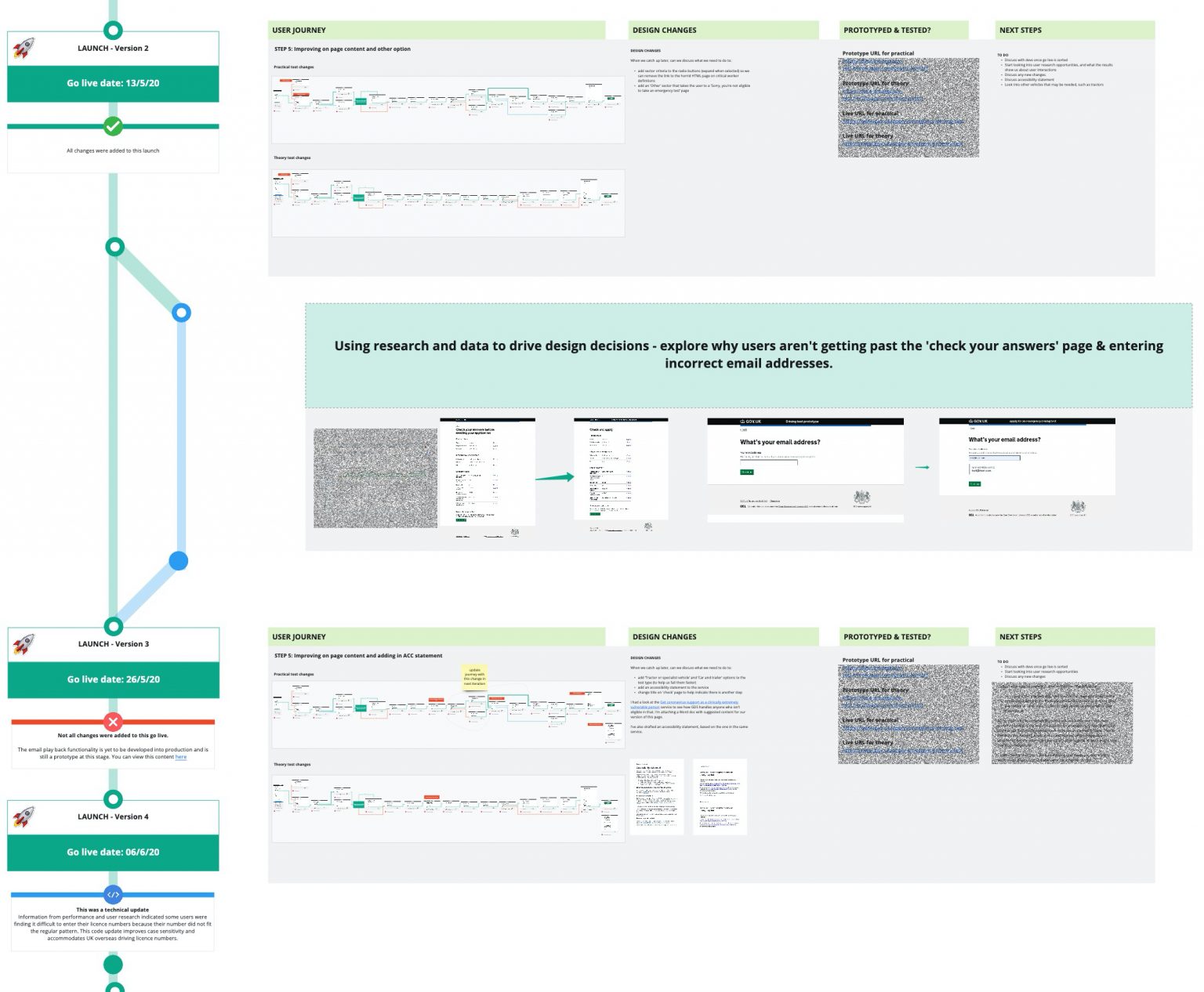May 1, 2021
Designing, prototyping and launching the emergency driving test service
A case study talking through the design decisions that helped a team deliver an emergency COVID service in just 34 days.

Introduction
This case study focuses on my involvement in creating a temporary replacement service during the COVID-19 pandemic, enabling critical workers to apply for driving tests.
A more detailed version of this is work is featured in the Design in Government GOV.UK blog (link opens in a new tab).
The Situation
In March 2020, the driving test service was suspended due to the pandemic. The DVSA decided to build a service to allow critical workers to apply for tests and reduce manual processing.
The Task
As the Service Designer, I collaborated with the team to ensure user needs were met and designed a prototype for the final solution.
Discovery Phase
Research was conducted to gather user needs, understand pain points, and identify evidence requirements for critical worker eligibility.
User needs
Critical worker user need
As a key worker without a full driving licence I need to book a theory or practical driving test as soon as possible to enable me to travel to and from, or for work purposes.
Need is met when the user:
- knows if they meet the eligibility criteria for an emergency test
- can apply for emergency test
- knows what happens when they've applied
- can take their test if they meet the eligibility criteria
DVSA Deployment team user need
As a member of the DVSA Deployment team I need to be able to prioritise and process driving test requests from key workers as quickly as possible.
Need is met when the user:
- has a complete application to process
- can quickly match the candidate's request against an available driving examiner
- is able to easily keep track of new applications and completed applications
Designing the Service
We prioritised questions to identify critical workers first, followed by contact information and test-related questions. A user journey map was created.
Keeping Stakeholders Informed
We used Miro to document workshops, meetings, and prototype versions. A documentation structure was introduced, showcasing design changes.

Prototyping the Service
We used GOV.UK Design System and Prototype Kit to create high-fidelity prototypes. JavaScript was added for an interactive user journey.

Expanding Documentation Style
Design and development lanes were introduced into our documentation, showcasing research, design ideas, and live versions.

Adapting After Go Live
User feedback led to improvements, like an email replay component to avoid typos. Alert cards were used to indicate added features.

Conclusion
The temporary service helped 30,000 critical workers book tests and received 110,000 applications. Lessons learned were integrated into DVSA's ways of working.
It was a proud achievement to provide a service for critical workers during a difficult time.